Squier Guitars...
Squier Bounces Back
Take Me To The Guitars
Squier Guitars
 were imported into the United States by Fender in late 1983
in order to compete with the many copies
flooding the domestic market. To make them stand out without competing directly
with Fender's existing domestic models, these U.S.-bound Squier models were given
70s features and touted as the first instruments ever "officially authorized" to
borrow from Fender's classic designs.
were imported into the United States by Fender in late 1983
in order to compete with the many copies
flooding the domestic market. To make them stand out without competing directly
with Fender's existing domestic models, these U.S.-bound Squier models were given
70s features and touted as the first instruments ever "officially authorized" to
borrow from Fender's classic designs.
The series included Stratocaster, Telecaster and Precision bass models, and
three Bullet models - affordable entry-level instruments combining Stratocaster-style
body shapes with Telecaster necks in triple-single-coil or dual-humbucking pickup
versions, plus a split-pickup bass with a Telecaster-style headstock. These instruments
re-launched the Squier Guitars name in the American market.
Squier Gains Momentum...
1983 Squier Precision Bass
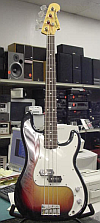
The Squier Standard Series, introduced in the mid-1980s, was based on the
original vintage models, but with more up-to-date features
(likely mirroring design evolution and standardization at big brother Fender).
By 1989, the series had evolved to include the Squier II Stratocaster
(which had a more modern-looking tremolo) several non-pickguard contemporary
designs, and even the heavy metal HM Series, which featured pointed headstocks
and flashy finishes. These contemporary and HM series instruments soon disappeared
quietly, but the Standard Series itself continued throughout the early 1990s
and evolved into a new generation of Squier models.
1989 Squier HM Strat
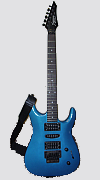
The Squier Guitars lineup was augmented in 1996 with Affinity and Pro Tone/Vista series
guitars and basses. Entry-level Affinity Series instruments were straightforward,
basic Stratocaster, Telecaster and Precision Bass guitars in black, red and white.
Next came the existing Standard Series, and at the top of the line were the new
Pro Tone models, fine instruments with special touches (aged plastic parts, shell pickguards, painted headcaps, etc.)
that appealed to the growing number of Squier players who preferred to upgrade
their instruments with after-market parts.
Squier Pro Tone Stratocaster
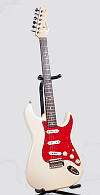
Higher-end options such as transparent finishes on ash bodies and gold hardware
began to drive Squier prices up and elevate the brand perhaps a bit too close to
Fender and Fender Japan during this brief era.
Rounding Out The '90s...
Squier Vista Super-Sonic
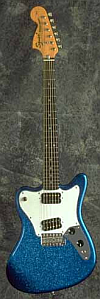
Non-traditional Squier Vista Series instruments were also introduced in this period.
Some Vista models, such as the Super-Sonic, Venus and Venus XII(a 12-string guitar), were innovative
designs with no clear Fender predecessors; others combined Fender features from
different models into all-new creations such as the Jagmaster, which remains a
solid Squier performer to this day.
Squier Vista Jagmaster
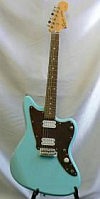
The Affinity Series paved the way for the subsequent great success of
Squier instrument/amp/accessory packages, such as the
Strat Pak and
Bass Pak,
that provided aspiring musicians with everything they need to enter the world
of amplified music in a single all-in-one purchase (usually by mom or dad).
Fender had previously experimented with "holiday bundles", but the Squier instrument
package concept proved wildly successful, putting a new generation of young
musicians on a path to making music.
Next: Squier Guitars In The 21st Century...
Source: Official Squier Guitars Website
were imported into the United States by Fender in late 1983
in order to compete with the many copies
flooding the domestic market. To make them stand out without competing directly
with Fender's existing domestic models, these U.S.-bound Squier models were given
70s features and touted as the first instruments ever "officially authorized" to
borrow from Fender's classic designs.













New! Comments
Have your say about what you just read! Leave me a comment in the box below.